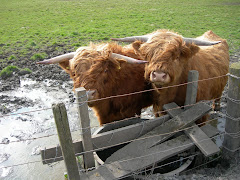According to the official Boy Scouts of America Field book, "Fly casting is a skill you can learn in a few minutes, and then spend the rest of your life trying to perfect." This certainly rings true, and it is certain that there are few fishing activities more enjoyable than the noble art of fly-fishing. This article will focus on the "few minutes" part of that quote, and get you on the way to fishing enjoyment with a minimum of fuss.
When fly-fishing, your equipment will consist of a rod 6-10 feet long, a winch reel located below the rod, and the line, which is weighted to be heavier than regular fishing line. When fly-fishing, instead of putting a sinker on the end of your line to carry it out as you cast, fly fishermen use no sinker: the line itself acts as a weight. Don't make the mistake of trying to use your regular fishing gear for fly-fishing: take it from me, you won't get anywhere. The good news is, though, you can get set up for fly-fishing relatively cheaply, and then you can fish as much as you want for the cost of the gas to get to and from your favorite fishing hole.
Now, as you cast, the main difference that you will notice from conventional fishing is that you do not leave the line in the reel: you will actually pay out a little bit of line and hold it in your hand, then release it as you cast. This can look a little silly, but considering the low weight of a fly-fishing rig and the precision required in fly fishing to drop your fly right where you want it, directly over the fish, it is a necessity. So, before you actually cast, swing the rod back and forth over your head a few times, getting a feel for it and feeling the loading energy go from the rod to line and back. As you do this, use the hand that is not holding the pole to feed out the line from the reel and control the length of it. After about half a minute, you will have enough line looping in the air to cast, so swing the rod tip out toward your target, watching the line arc out over the water. Where you put the fly will depend on the current of the water: if it is still, place it right on top of the fish. It is moving, place it a little above the fish and let it float down to them.
Other types of fishing may get you bigger fish, but one thing is true: no other fishing experience in the world can top the satisfaction of expertly casting out a fly and watching a big bass explode out of the water for it. It doesn't matter how many times you see it happen: when that water pops, you'll jump.
When fly-fishing, your equipment will consist of a rod 6-10 feet long, a winch reel located below the rod, and the line, which is weighted to be heavier than regular fishing line. When fly-fishing, instead of putting a sinker on the end of your line to carry it out as you cast, fly fishermen use no sinker: the line itself acts as a weight. Don't make the mistake of trying to use your regular fishing gear for fly-fishing: take it from me, you won't get anywhere. The good news is, though, you can get set up for fly-fishing relatively cheaply, and then you can fish as much as you want for the cost of the gas to get to and from your favorite fishing hole.
Now, as you cast, the main difference that you will notice from conventional fishing is that you do not leave the line in the reel: you will actually pay out a little bit of line and hold it in your hand, then release it as you cast. This can look a little silly, but considering the low weight of a fly-fishing rig and the precision required in fly fishing to drop your fly right where you want it, directly over the fish, it is a necessity. So, before you actually cast, swing the rod back and forth over your head a few times, getting a feel for it and feeling the loading energy go from the rod to line and back. As you do this, use the hand that is not holding the pole to feed out the line from the reel and control the length of it. After about half a minute, you will have enough line looping in the air to cast, so swing the rod tip out toward your target, watching the line arc out over the water. Where you put the fly will depend on the current of the water: if it is still, place it right on top of the fish. It is moving, place it a little above the fish and let it float down to them.
Other types of fishing may get you bigger fish, but one thing is true: no other fishing experience in the world can top the satisfaction of expertly casting out a fly and watching a big bass explode out of the water for it. It doesn't matter how many times you see it happen: when that water pops, you'll jump.
Jay has been interested in family, finance and health issues for many years now, although he is fairly new to article writing. Please visit his latest website about DVD Storage Cases which helps people find the best clear DVD cases and other information and pricing on storing your DVDs.
Article Source: http://EzineArticles.com/?expert=Jay_A._Jenkin









No comments:
Post a Comment